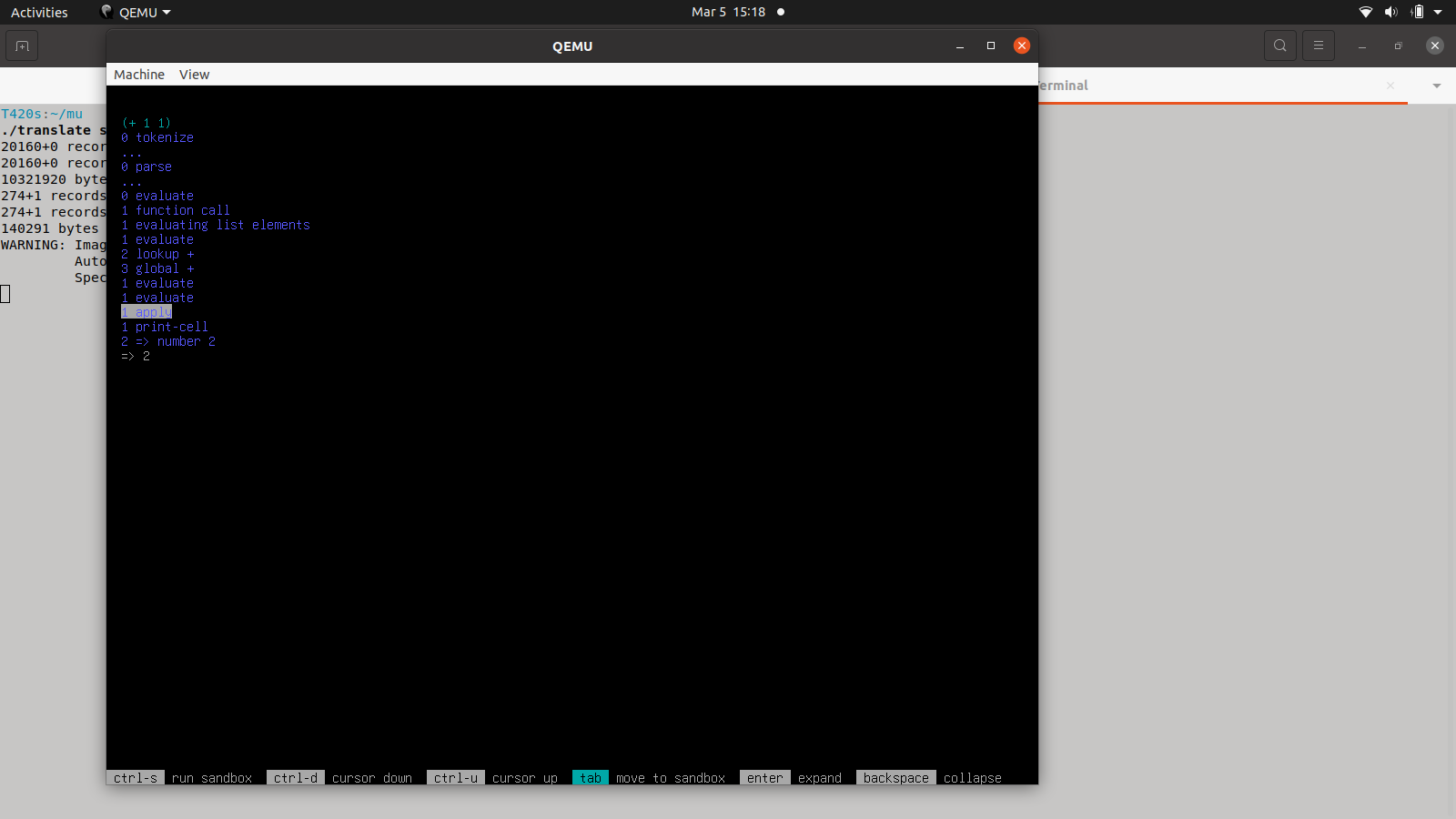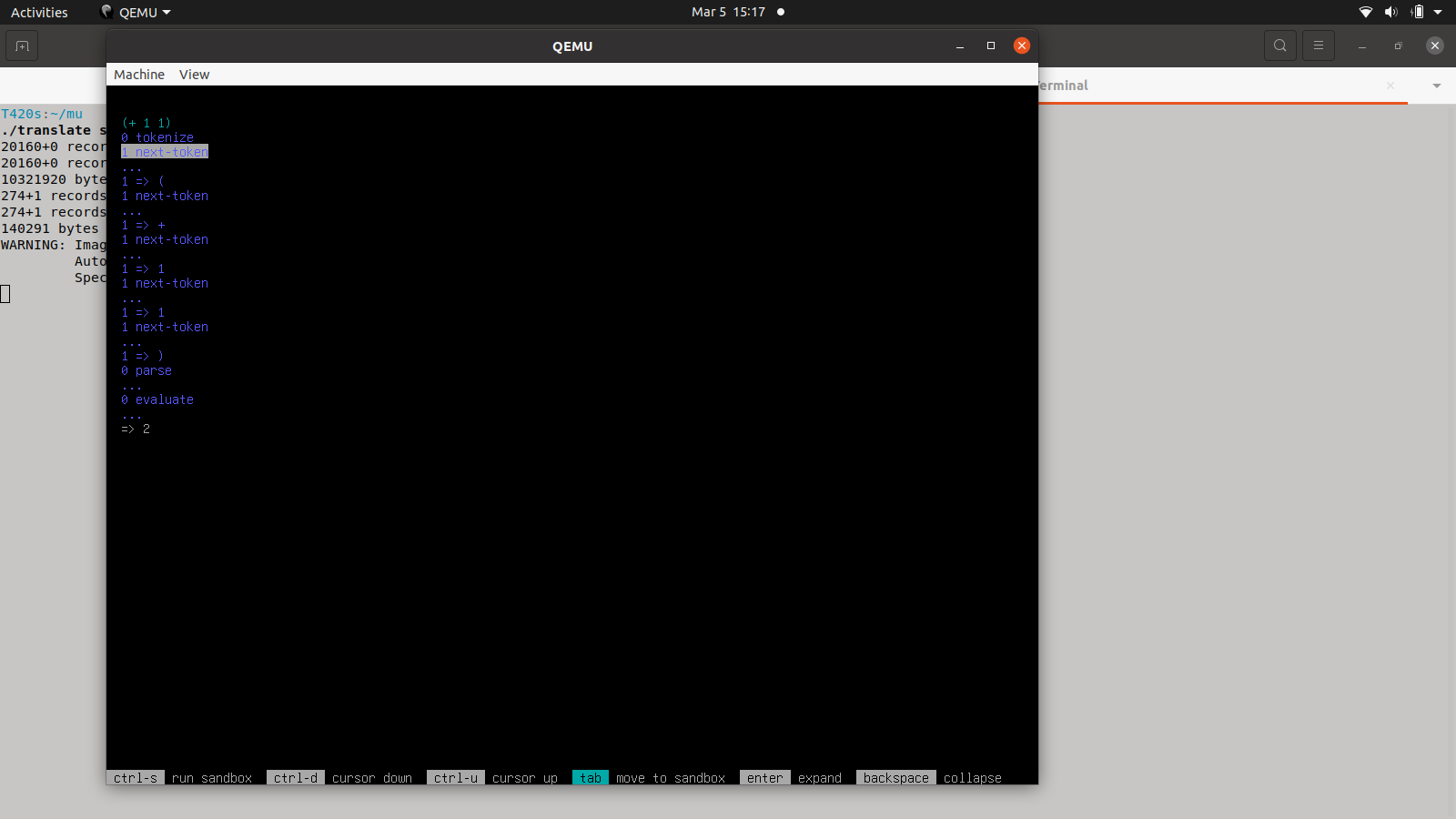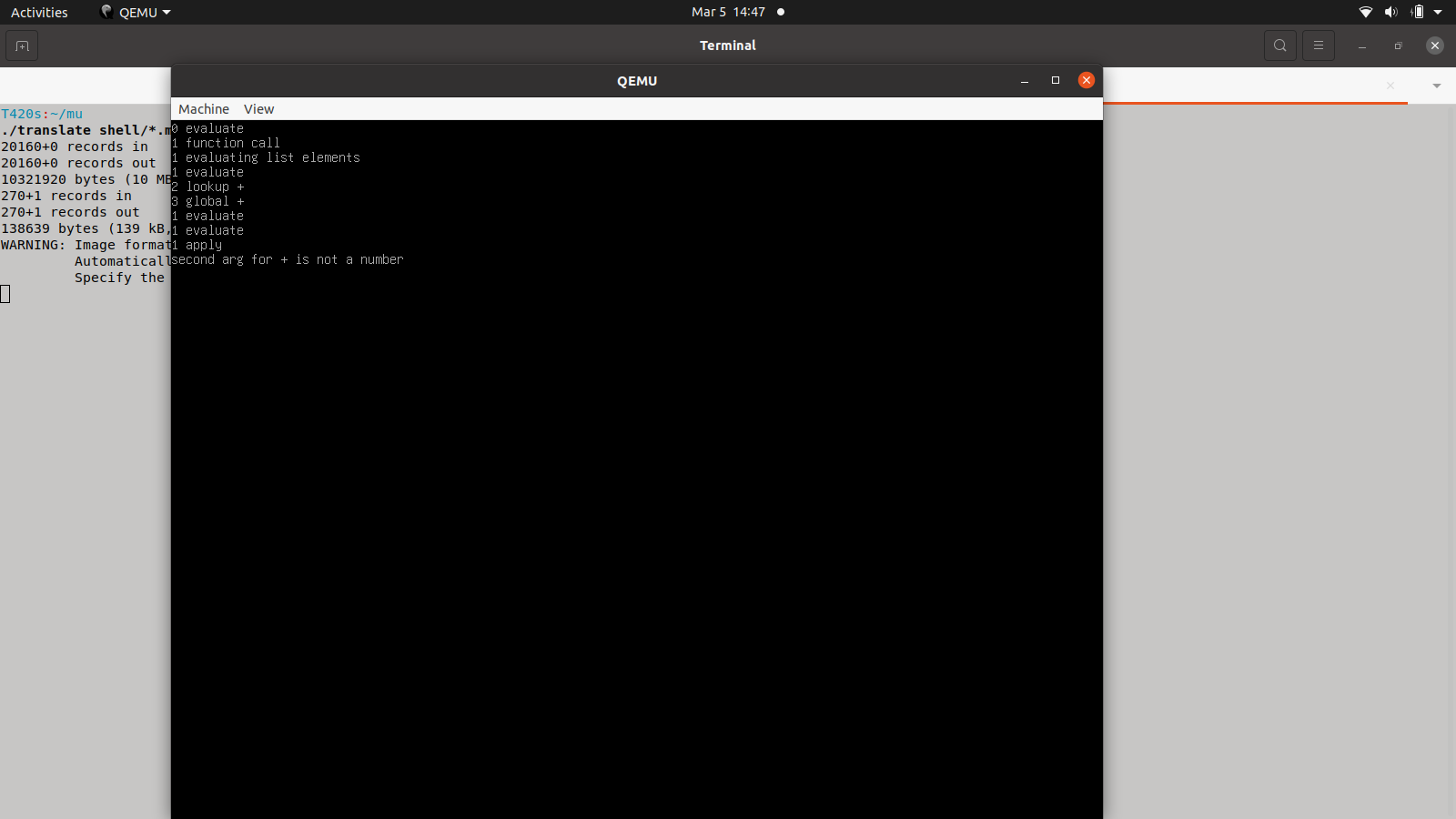Apr 9, 2021
Mu's HLL is now Turing-complete, I think.
Screencast of a rudimentary Lisp environment running within Qemu. The left side shows global bindings. The bottom shows a list of available keybindings. The bottom left shows a list of available primitive functions. The right side shows a sandbox where I type in the definition of the factorial function, with matching parens highlighting as I type.
I then drill down into a trace of the computations performed for the factorial of 5.
Things to notice:
Wordstar-style menu at the bottom.
List of available primitive functions in bottom left.
List of globals on the left side that updates as I add definitions.
Matching parens highlighted as I type.
Drilling down into the trace to understand how the program was evaluated.
https://github.com/akkartik/mu/blob/main/shell/README.md
Main project page: https://github.com/akkartik/mu
permalink
* *
Mar 29, 2021
What should the signature of a program look like?
Typed languages have a fixed signature for function `main`. A list of strings, a window context, or an IO monad.
Here's the signature on the Mu computer:
fn main screen: (addr screen), keyboard: (addr keyboard), data-disk: (addr disk)
A rudimentary, hokey capability system. No mouse yet. 'screen' is only used for text; pixel graphics currently go around it. 'data-disk' can't access code, and will eventually include finer-grained restrictions.
permalink
* *
Mar 23, 2021
The Mu computer now has drivers for disk and mouse.
Still extremely klunky. IDE disk drives only, and the mouse driver uses polling because configuring IRQ 12 is still beyond me.
Example programs (as usual memory safe and translating 1:1 to x86 machine
code)
Disk: http://akkartik.github.io/mu/html/ex9.mu.html
Mouse: http://akkartik.github.io/mu/html/ex10.mu.html
Here's video of the mouse example. There's no pointer so you have to imagine
me moving the mouse around.
Like I said. Klunky.
Main project page: https://github.com/akkartik/mu
permalink
* *
Mar 22, 2021
Mu can now read from an ATA (IDE) disk drive on Qemu.
https://github.com/akkartik/mu/tree/main/shell#readme
It wouldn't have been possible without the lovely folks over on #osdev. And the inspiration of ColorForth (https://merveilles.town/@akkartik/105906716550232992 ), though I still don't understand how that driver works.
permalink
* *
Mar 17, 2021
A driver for IDE hard disks in Forth
https://colorforth.github.io/ide.html
It seems to be using https://wiki.osdev.org/ATA_PIO_Mode which transfers data to disk one byte at a time. Super inefficient. And yet, so small! ❤️
permalink
* *
Mar 9, 2021
Today was documentation day
Primitives available in the Mu computer when running without an OS: https://github.com/akkartik/mu/blob/main/vocabulary.md
Primitives available when running on Linux: https://github.com/akkartik/mu/blob/main/linux/vocabulary.md
For starters I focused just on making things more discoverable. These files are optimized for opening in your text editor, jumping to definitions to see type signatures, etc. See https://github.com/akkartik/mu/blob/main/editor/exuberant_ctags_rc for a ctags configuration for Mu and SubX programs.
Main project page: https://github.com/akkartik/mu
permalink
* *
Mar 7, 2021
Visualizing function calls with anonymous functions
https://github.com/akkartik/mu
permalink
* *
Mar 4, 2021
I
really wish I'd read Kragen Sitaker's
https://dercuano.github.io/notes/forth-assembling.html before I built SubX.
permalink
* *
Mar 3, 2021
I took a stab at reorganizing Mu's directory tree. It had gradually sprawled from old stuff at the top-level to new stuff in sub-directories. Now the top-level contains what I want people to see first, and build tools for each directory are in a sub-directory.
Building a disk image before:
./translate_mu_baremetal baremetal/life.mu
After:
./translate life.mu
Building an ELF binary before:
./translate_mu apps/hello.mu
After:
cd linux; ./translate hello.mu
https://github.com/akkartik/mu#readme
permalink
* *




